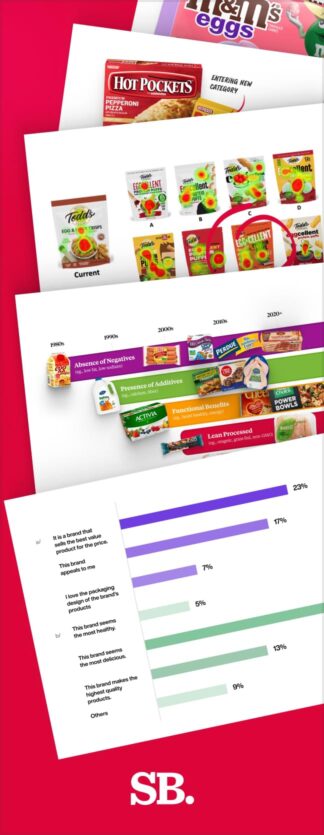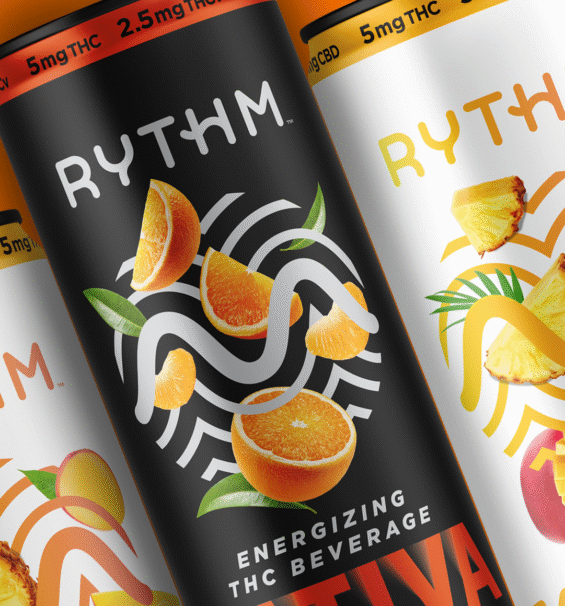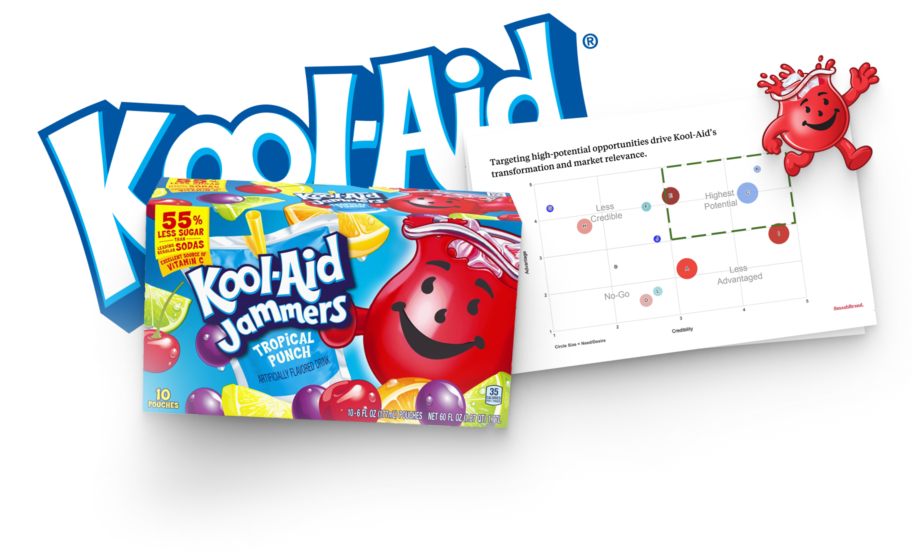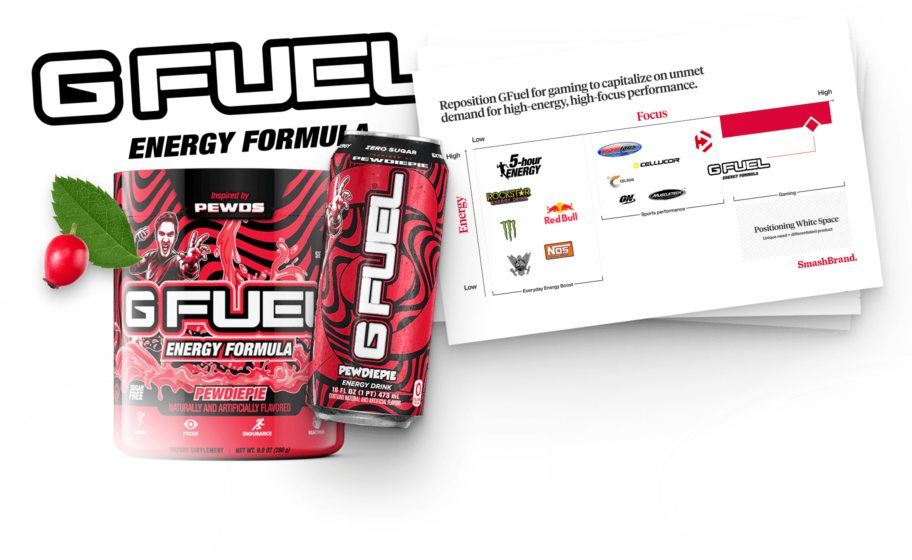You don’t need another clever tagline or a mood board full of vibes. You need your product to get picked. And right now, it’s not. You’ve done the work, refined your brand strategy, locked in your brand positioning statement, even tweaked the product positioning, and still, you’re not owning the shelf. Sound familiar?
The problem likely isn’t your SKU assortment, your price point, or even your channel partner. It’s your positioning. More specifically, it’s a lack of category positioning, the kind that speaks to your target audience at eye level, in their language, at the exact moment of choice. It isn’t about buzzwords. It’s about building a brand that wins in its market category through strategic, tested, and differentiated category management.
In this article, you’ll learn how to create an effective brand positioning strategy that connects brand, product, and category, and how an innovative positioning strategy changes everything.
Understanding the three tiers of positioning.
If your brand isn’t performing the way it should, the issue often comes down to a misaligned or incomplete positioning strategy. Most teams focus on brand identity, flavor options, or ingredient novelty, yet they overlook the critical middle layer: category positioning.
Each serves a unique function, and when aligned correctly, they form a complete brand positioning framework that ensures your message lands with your target market, resonates across your product category, and differentiates you from every competitor in your space.
Let’s break it down, starting from the top:
Brand positioning.
It is the emotional and functional identity of your brand. It’s the reason your target customer should care that you exist and keep coming back. A strong brand positioning statement anchors your brand personality, tone, and values in a way that’s meaningful across every existing category you enter.
Unlike value-based positioning that’s just about price or function, accurate brand positioning communicates your value proposition in human terms. It’s about building trust, recognition, and loyalty over time, not just this quarter’s spike.
Whether you’re competing on quality positioning, cultural relevance, or innovation, your brand must stand for something consistent and clear across categories, across SKUs, and moments in the consumer’s life. That’s how you move from noise to necessity in your market positioning.
Category positioning.
Category positioning is the bridge between brand vision and real-world shelf performance. It answers the questions your consumer asks: where does this product fit, and why should I choose it right now? It’s the “where” and “how” your brand shows up within a specific competitive set, shaped by behavior, context, and the moment of purchase.
Unlike a broad marketing strategy or aspirational brand messaging, this is where decisions become tangible. An effective positioning strategy at the category level ensures your brand is seen, understood, and selected over alternatives.
It requires strategic market mapping that maps your product against others in the aisle, identifying how you deliver a unique value proposition or own a space competitors have overlooked.
What sets category positioning apart is its sharp focus on context. While brand positioning builds long-term equity and product positioning zooms in on functional benefits, Category positioning defines how your brand is perceived inside a given product category, relative to competitors, consumer expectations, and retail dynamics. It’s not about who you are; in theory, it’s about how you’re perceived against your competitors when a consumer has three seconds to make a decision.
Product positioning.
Product positioning is the most tactical layer of the positioning hierarchy. It zeroes in on the specific value proposition of a single SKU, what it is, what it does, and why your target segment should choose it now. While brand and category positioning shape perception over time and across contexts, product positioning exists to close the deal in the moment.
A strong product positioning statement answers:
- What problem does this solve?
- What’s the unique feature or benefit that makes it better?
- How is it different from the competing brand sitting right next to it?
It translates the brand position into tangible claims and visuals that drive shelf conversion. What makes product positioning different is its focus on the SKU-level battleground. It’s also the most flexible lever for innovation and positioning.
A new formula, a new pack size, a new feature, all of it lives here. And when tested and executed well, it doesn’t just lift one SKU, it builds brand awareness, reinforces your market leader ambitions, and strengthens everything above it.
In short:
- Brand positioning says who you are.
- Product positioning says what it does.
- Category positioning says why it wins here, now, against them.
Why is category positioning necessary for CPG growth?
Walk down any aisle, grocery, convenience, mass retail, or scroll through a digital shelf, and the reality hits hard: clutter is the constant. Every retailer is packed with variations of the same promise, the same function, the same format. And in most product categories, there’s barely room to breathe, let alone stand out.
Purchase behavior in CPG is often subconscious, driven by cues like color, claim prominence, and shelf location. If your packaging doesn’t communicate an apparent reason to choose you now, it’s invisible. That’s why category positioning is foundational for growth.
A strong category position makes your product easy to find, easy to understand, and easy to choose within a specific competitive landscape. It complements your brand positioning map by ensuring your visual and verbal cues are optimized for the moment of choice.
In other words, your product positioning strategy could be airtight, and your brand positioning framework may be polished and on point. But if your product shows up in-market looking, sounding, or acting like every competing brand, none of it matters.
The strategic levers of clever category positioning.
Category positioning is a series of deliberate, research-driven decisions designed to help your brand win the moment. It’s how you build a strategy that resonates at the shelf and translates directly into market performance. Clever category positioning uses real consumer behavior, competitive insight, and brand clarity to shape everything from messaging to visuals to channel fit.
Below are the essential levers that drive differentiated value, unlock market share, and ensure your brand messaging aligns with what your consumer sees, feels, and chooses.
Market mapping and competitive audits.
The foundation of effective category positioning starts with understanding the terrain. Market mapping allows you to visually plot where each competitor sits based on key attributes, tone of voice, benefit type, format, or emotional appeal. It’s a way to quickly reveal where the crowding is and, more importantly, where the white space is.
It’s a strategic visual built to guide your brand positioning matrix. When layered with brand positioning research and consumer perception data, this map becomes your blueprint for owning a unique spot in the aisle.
Competitive audits take it a step further by analyzing what’s working in-market, how other brands are showing up, what claims are resonating, what shelf tactics are creating traction, and how well (or poorly) they’re executing their competitor-based positioning strategies.
Understanding category-specific purchase drivers.
Every category is unique and therefore, there’s no one-size-fits-all messaging. What drives purchase in protein drinks is not what drives purchase in cleaning wipes, and yet too many brands skip this critical step and assume their brand messaging will carry them. To develop an effective product positioning, you must understand what matters to your consumer in your specific category.
These are your category-specific purchase drivers, the rational and emotional triggers that influence buying decisions. Start by identifying the core drivers. In food and beverage, taste is often non-negotiable. In cleaning products, efficiency is key. In value-driven segments, pricing and perceived function can win the shelf. In premium or lifestyle-driven categories, identity, coolness, and trust shape the decision.
Next, test where your current packaging stands against those drivers. Use behavioral and quantitative tools to gauge if your current execution communicates what the consumer needs to see. Are you winning on what they care about or just shouting into the void?
Balance distinction with category relevance.
The goal of category positioning is to stand out for the right reasons. Too much distinction without context, and you risk confusing or alienating the consumer. Too much relevance without differentiation, and you blend into the background with every other competing brand.
To win, your product must immediately feel like it belongs in the category but with a differentiated value that gives it an edge. That’s the balance between being familiar enough to trust and distinct enough to choose.
Smart product positioning strategy walks that line with precision. It uses design, claims, and tone that align with the category’s expectations while injecting just enough brand personality and innovation to break the pattern.
Warning signs you’re overstepping:
- Packaging feels out of place on the shelf.
- Consumers don’t understand what the product is or where it fits.
- You’re introducing entirely new language or visuals with no category cues.
Warning signs you’re blending in:
- Visuals and messaging mirror category leaders too closely.
- Claims are generic and interchangeable.
- Consumers notice the product but don’t remember it.
The sweet spot? Create familiarity with intent, then break it just enough to trigger curiosity and conversion. That’s how you stay relevant and memorable.
Build messaging and design hierarchy for shelf behavior.
At the moment of purchase, you’ve got one job: be understood in a second or be ignored. Consumers make fast, intuitive decisions at the shelf. Your packaging needs to work like a strategic billboard.
That starts with a messaging and design hierarchy built around how people shop, not how you want to tell your story. Shelf behavior is visual first, logic second.
Your layout, claims, and visuals must answer two things instantly:
- “What is this?” (category clarity)
- “Why is it better?” (clear, competitive edge)
Start with claims. They’re the entry point. Then move on to the visuals. Use imagery, color, and holding shapes to signal the product category and trigger recognition immediately. Follow that with claims, but only the ones that map directly to purchase drivers. Don’t over-explain. Anchor around the most compelling proof point.
Structure your layout to guide the eye. Lead with the unique selling point. Support it with trust signals. Use contrast and white space to control attention, not cram in noise. An effective positioning statement is visible in the layout, readable at a glance, and confirmed through shelf testing.
Simulate the real buying context.
You don’t win at shelf by guessing, you win by testing. That’s why real-world, contextual testing is the most potent tool in category positioning. It reveals how your product performs when it matters most: next to your competitor, at full price, under pressure.
Consumers don’t compare claims; they go with gut instinct. The only way to know if your positioning strategy cuts through is to simulate the buying environment with realistic variables: competitor SKUs, shelf layout, pricing, and purchase triggers.
It is where brands separate assumptions from outcomes. Crocodile Cloth, for example, didn’t just test its visual appeal; it validated that its bold green-and-black palette pulled attention away from Lysol on a simulated shelf.
The best testing mimics reality: shelf-first decision making, category confusion, and time pressure. It tells you whether your brand messaging, visuals, and claims shift market share or get lost in the noise.
Common missteps that kill shelf impact.
Shelf success doesn’t hinge on how much you say; it hinges on what lands. Too many brands sabotage their category positioning by prioritizing internal preferences over consumer behavior. Here’s where it goes wrong:
- Over-branding the pack: Loud logos, legacy taglines, and brand ego often crowd out what matters. When the visual focus is on the brand personality rather than the value proposition, shoppers move on.
- Unclear or irrelevant claims: If your claims don’t map to category-specific purchase drivers, they’re just noise. “Farm-to-table” means nothing in energy shots.
- Assuming the consumer will connect the dots: Confusion kills conversion. Vague headlines, overloaded design, and undefined categories leave consumers guessing, and no one shops with a decoder ring.
- Skipping testing: You’re not your customer. Relying on internal teams or best guesses over positioning research is a recipe for misalignment.
We’ve seen countless brands with strong innovation and positioning fall flat, not because the product was wrong, but because the positioning statement never translated to the shelf.
What intelligent category positioning delivers.
When you get category positioning right, it performs. Strategic, tested, and consumer-aligned positioning delivers measurable, high-impact results where it matters most: in-market.
- Stronger Shelf Breakthrough: Products that align with category cues and stand apart visually win the first battle: attention. Innovative use of claims, visuals, and layout creates shelf clarity and immediate recognition.
- Higher Purchase Intent: By aligning your messaging and visuals with what truly drives purchase, you convert more browsers into buyers.
- Better Alignment Across Teams and Channels: A clear, validated positioning framework eliminates internal debate and disjointed execution.
- Faster Path to Market Success and Loyalty: Smart positioning shortens the feedback loop, reduces relaunch risk, and sets you up for sustained brand preference.
Category positioning sets the stage for expanding SKUs within the category.
Proper category positioning doesn’t just help you win shelf space; it builds a clear, scalable platform for growth within the category. When your product is distinctly positioned in the consumer’s mind, it becomes easier to introduce new formats, sizes, or use-case variations without confusing your audience or diluting your brand.
Take the energy category: if your 8-oz can is positioned as a “clean boost for busy afternoons,” that foundation gives you clarity for extending into a 16-oz version for longer endurance or a 2-oz shot for quick, on-the-go energy. The consumer already knows who you are and why you exist; now you’re just offering more ways to meet their needs.
Proper category positioning anchors your value in the category, allowing your SKU expansion to feel natural, purposeful, and aligned with both shelf behavior and consumer expectations.
Effective Category Positioning: Olipop’s Rise in Functional Sodas
Olipop, launched in 2018, redefined the soda category by positioning itself not just as another soft drink, but as a prebiotic soda, offering functional benefits like fiber for digestive wellness. In an aisle dominated by sugar-laden colas or diet options, Olipop carved out a unique niche with its clean ingredients and health-forward messaging.
Its standout identity and relevance to emerging consumer needs allowed it to amass over $400 million in sales by 2024, drawing enough attention to trigger a $1.95 billion acquisition of a peer, Poppi, by PepsiCo. This is the power of effective category positioning: meeting unmet needs with clarity and credibility.
Failed Category Positioning: Heineken’s Non-Alcoholic Launch
Estée Edit aimed at younger, trend-conscious consumers. Positioned as a fresh and edgy sub‑brand, it failed to resonate with its intended Millennial audience. The problem was twofold:
- The Estée Lauder brand identity was associated with prestige and heritage, not the “street-style” or youthful vibe Estée Edit tried to signal.
- Consumers weren’t clear whether Estée Edit belonged in beauty aimed at older audiences, emerging Gen Z street-style trends, or somewhere in between.
This mismatch in category alignment, trying to straddle too many identity cues without a clear value, led to consumer confusion and weak purchase intent. After a few years, Estée Edit was quietly discontinued.
Data-driven category positioning with low risk, high reward.
At SmashBrand, we engineer our way to shelf dominance. Our approach to category positioning combines competitive audits, brand positioning research, purchase driver testing, and simulated shelf environments to build a strategy that breaks through clutter and drives product sales.
We start with market mapping to identify white space, conduct consumer testing (MaxDiff, packwords, purchase intent), and craft a brand positioning framework that balances category relevance with ownable distinction. From there, our creative team develops packaging and messaging rooted in real data.
We then validate every concept against the competition in a retail-realistic test environment to ensure you’re positioned to win. Ready to build a brand that can’t be ignored on the shelf? Let’s talk.

Nice Package
Don’t miss out on our monthly newsletter Nice Package!
Each month, we deliver a data-driven newsletter directly to your inbox, unpacking a critical topic in the FMCG & CPG industry.
"*" indicates required fields
Subscribe to
Nice Package.
A monthly newsletter that unpacks a critical topic in the FMCG & CPG industry.
Free Resource.

CPG product repositioning guide.
Explore the five undeniable signs your CPG product needs repositioning along with strategies for leveraging consumer insights for a guaranteed market lift.
Learn More About CPG product repositioning guide.



